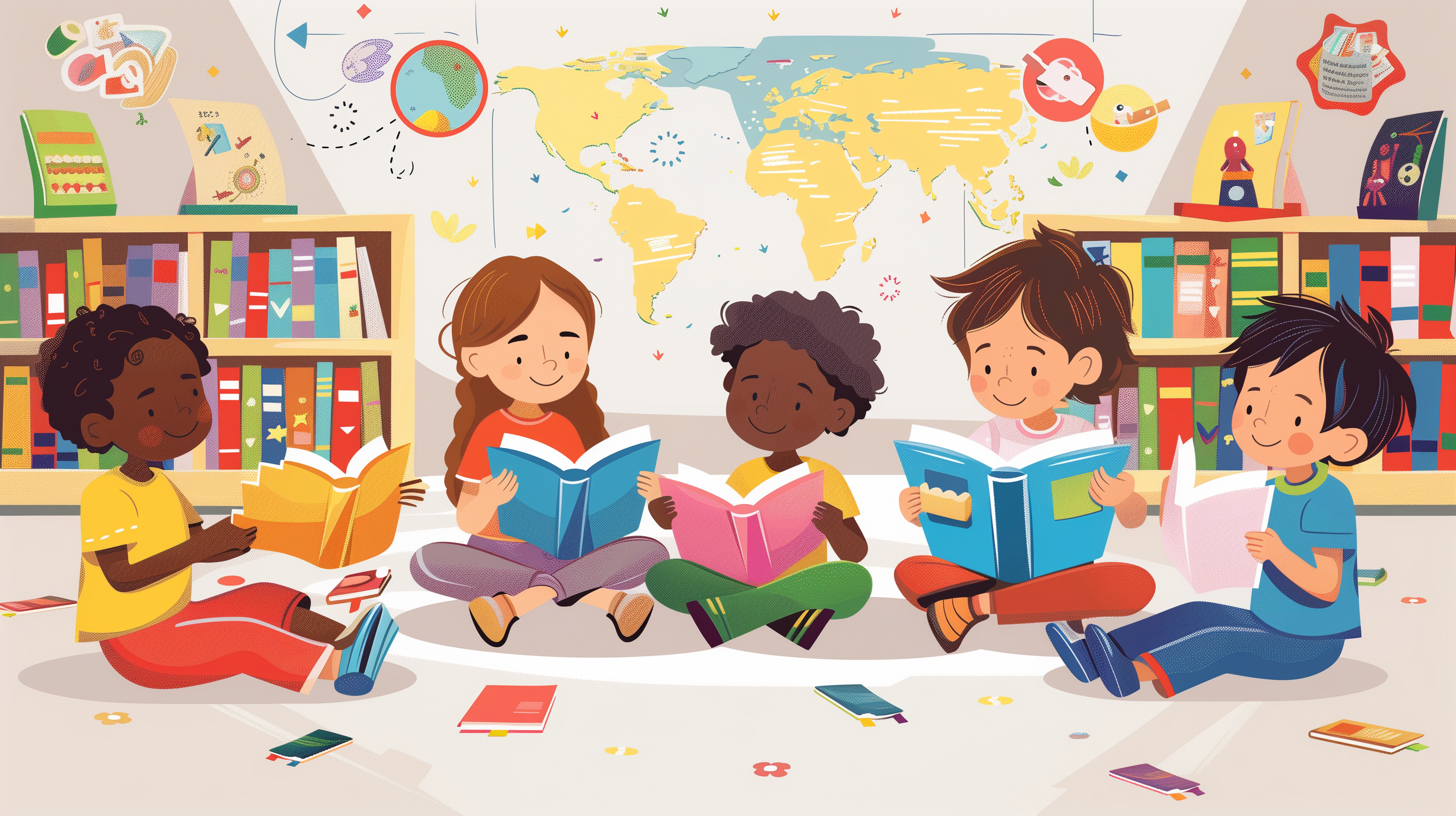As a children's poet, I've always believed in the power of poetry to open minds and hearts. Today, I want to talk to you, our dedicated elementary school teachers, about the incredible impact of multicultural poetry in your classrooms. By introducing your students to diverse voices and experiences through poetry, you're not just teaching language arts—you're broadening horizons and fostering empathy and understanding.

The Importance of Diverse Voices
In our increasingly interconnected world, it's crucial that children are exposed to a wide range of perspectives and experiences. Multicultural poetry offers a unique window into different cultures, traditions, and ways of life. It allows students to see themselves reflected in literature and to gain insights into lives different from their own.
Poetry, with its concise yet powerful format, is particularly well-suited for introducing multicultural themes. It can capture complex cultural concepts in accessible, memorable ways, making it perfect for young learners.
Spotlight on Multicultural Poets
Let's take a moment to celebrate some of the incredible poets who are enriching children's literature with their diverse voices:
Jacqueline Woodson: A former Young People's Poet Laureate, Woodson's poetry often explores themes of identity, family, and African American experiences. Her book Brown Girl Dreaming is a masterpiece of memoir in verse.
Margarita Engle: Another former Young People's Poet Laureate, Engle's work often draws on her Cuban-American heritage. Her poems beautifully blend history, culture, and personal narrative.
Naomi Shihab Nye: With her Palestinian-American background, Nye brings a unique perspective to children's poetry. Her work often touches on themes of peace, connection, and finding beauty in everyday life.
Elizabeth Acevedo: Though known more for her young adult novels in verse, Acevedo's work is a powerful representation of Afro-Latinx experiences and is increasingly finding its way into upper elementary classrooms.
Nikki Grimes: An award-winning poet and author, Grimes' work often centers on African American experiences and has a musical quality that appeals to young readers.
Kwame Alexander: Alexander's poetry, often infused with themes of sports and music, resonates strongly with many young readers, particularly boys who might be reluctant to engage with poetry.
Practical Ideas for Your Classroom
Here are some ways you can incorporate multicultural poetry into your teaching:
Poem of the Week: Feature a poem by a different multicultural poet each week. Discuss not just the content, but also the cultural context of the poem.
Cultural Celebration Days: Use poetry as part of your celebrations of different cultural heritage months or international days.
Poet Studies: Dedicate a unit to studying the life and work of a multicultural poet. This can be a great way to integrate social studies and language arts.
Poetry Pen Pals: Partner with a classroom in another country or region to share culturally significant poems.
Multilingual Poetry: Share bilingual poetry collections, such as those by Pat Mora and Francisco X. Alarcón. If you have ESL students, encourage them to share poems in their native languages, then work together to translate them into English.
Poetry and Art: Have students create artwork inspired by multicultural poems, encouraging them to research and incorporate culturally significant visual elements.
Benefits Beyond Diversity
While broadening cultural horizons is a crucial benefit of multicultural poetry, it's far from the only one. This approach also:
Enhances Vocabulary: Students encounter words and concepts from other cultures, expanding their linguistic repertoire.
Improves Comprehension: Grappling with diverse perspectives enhances students' overall reading comprehension skills.
Fosters Empathy: By seeing the world through others' eyes, students develop greater empathy and understanding.
Encourages Creativity: Exposure to diverse poetic styles can inspire students in their own creative writing.
Builds Confidence: Students from diverse backgrounds feel validated when they see their cultures represented in the curriculum.
A Personal Note
In more than 25 years of visiting schools and interacting with young readers, I've seen firsthand the power of diverse voices in poetry. While my own background might not be as diverse as some of the poets I've mentioned, I believe strongly in the importance of amplifying diverse voices and experiences in children's poetry. I encourage you to explore the works of these talented multicultural poets and to bring their words into your classrooms.
Multicultural poetry is more than just a teaching tool—it's a bridge to understanding, a window to the world, and a mirror for diverse students to see themselves reflected in literature. By incorporating these diverse voices into your curriculum, you're not just teaching poetry—you're shaping open-minded, empathetic global citizens.
So, dear teachers, I encourage you to dive into the rich world of multicultural poetry. Share these diverse voices with your students, and watch as their horizons broaden, their empathy grows, and their love for poetry blossoms.
Remember, in the words of Jacqueline Woodson, "Even the silence has a story to tell you. Just listen. Listen." Let's listen to the diverse voices in poetry and help our students do the same.
